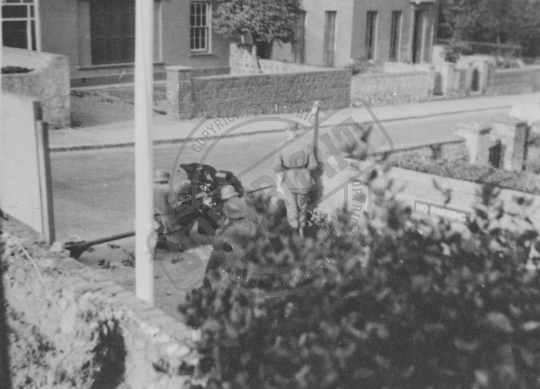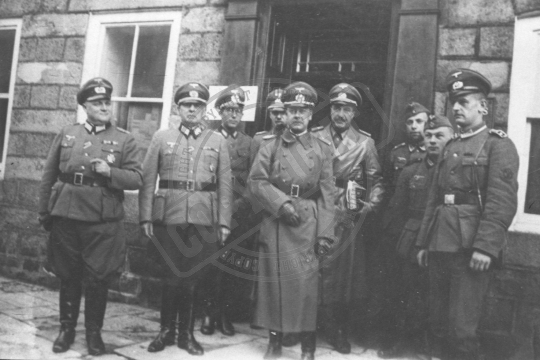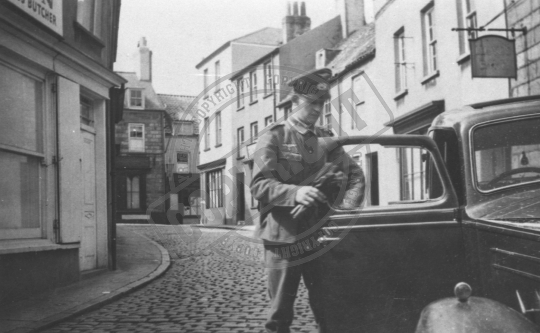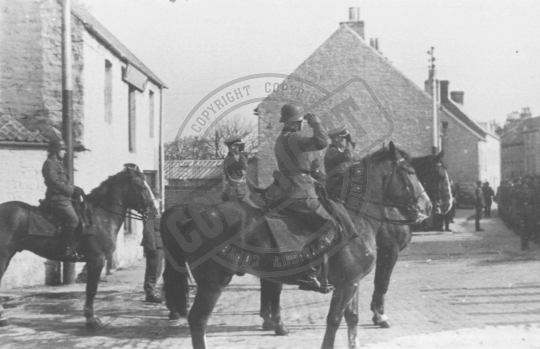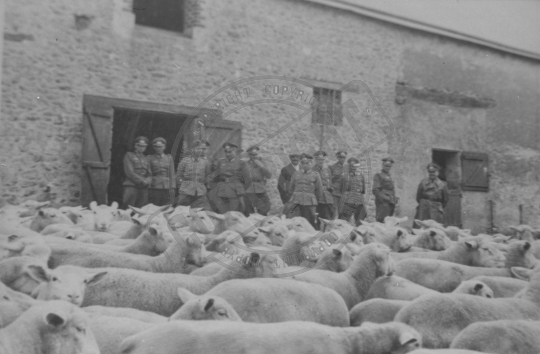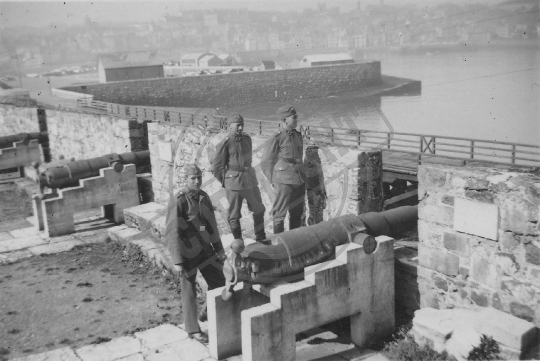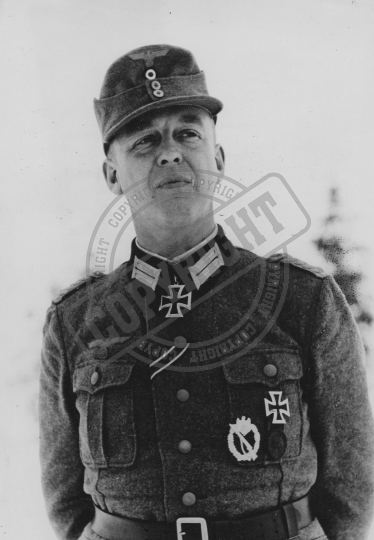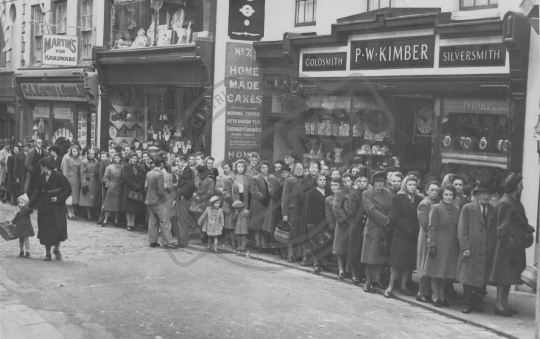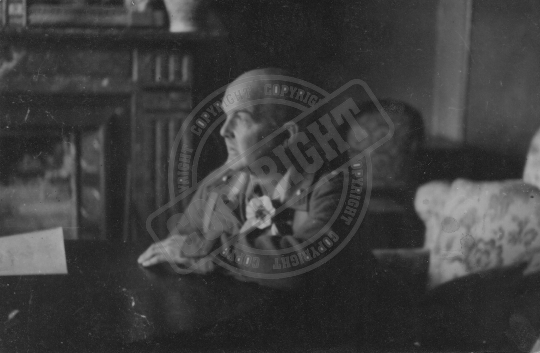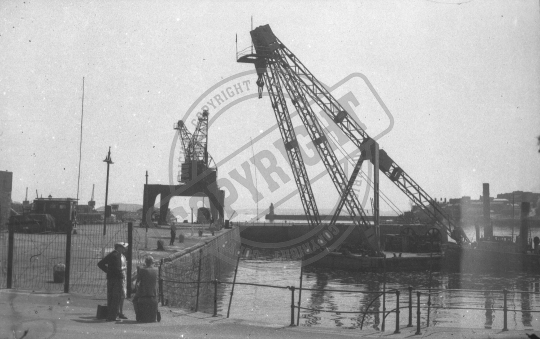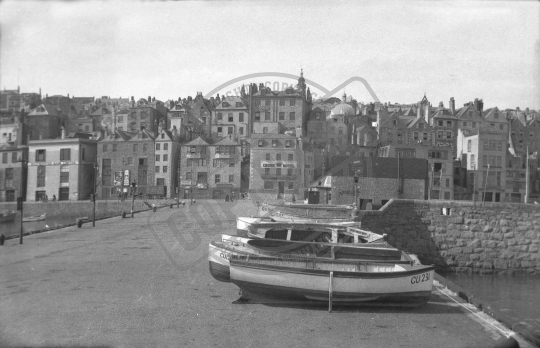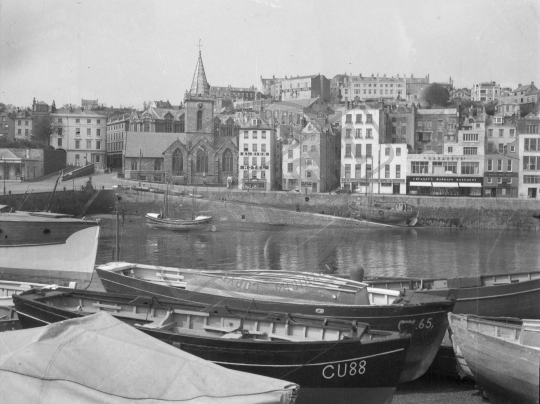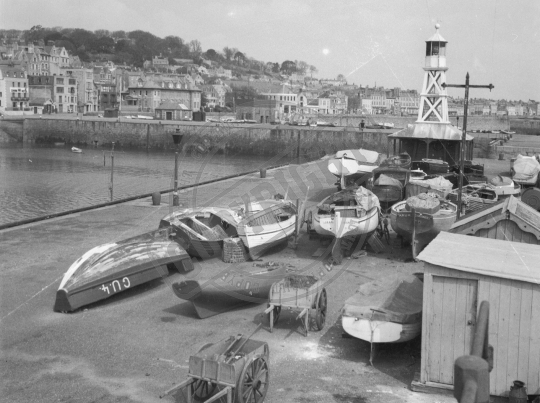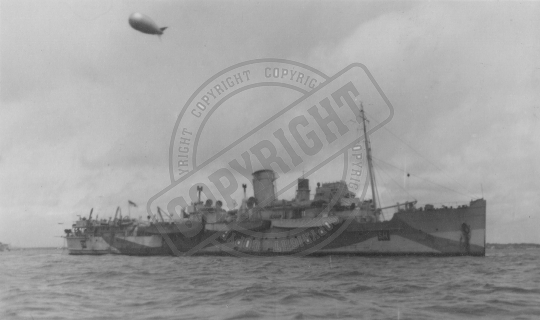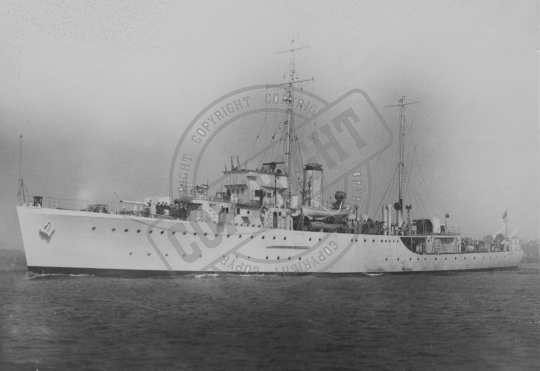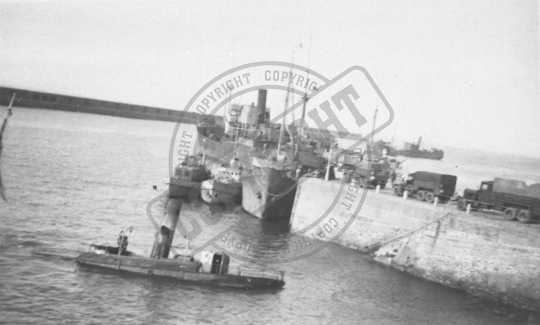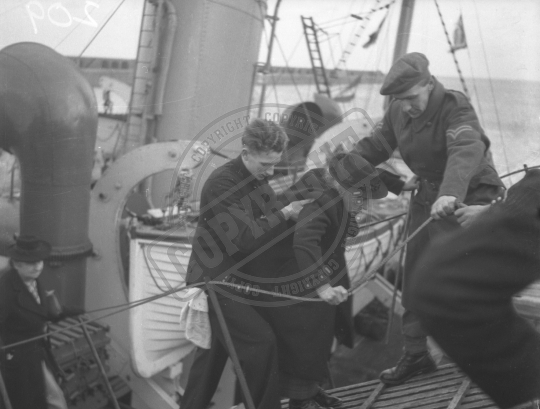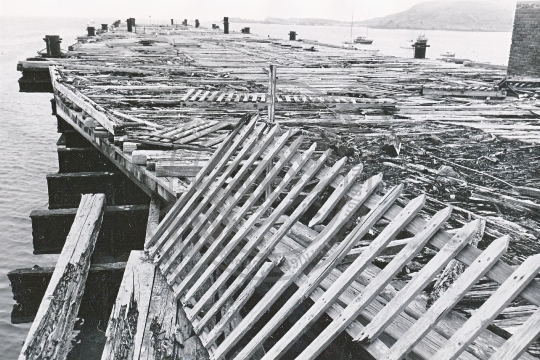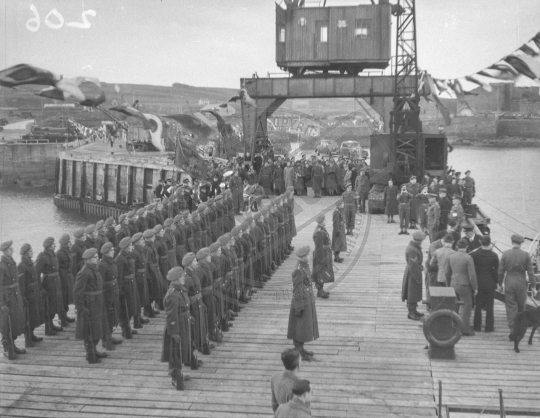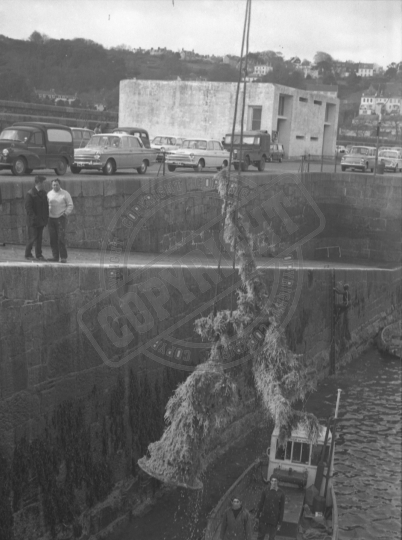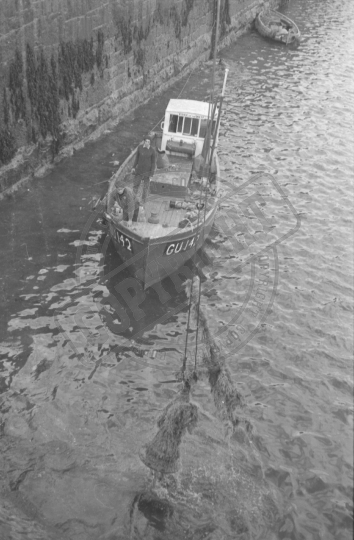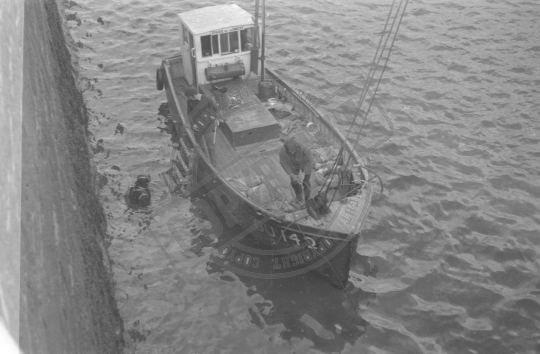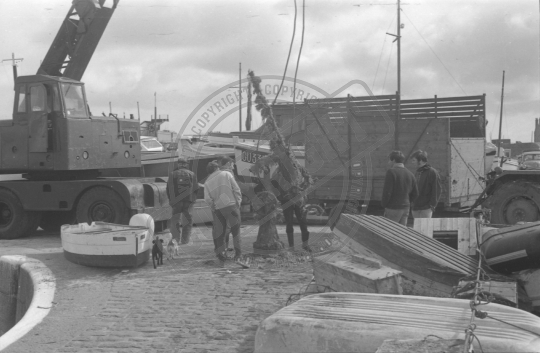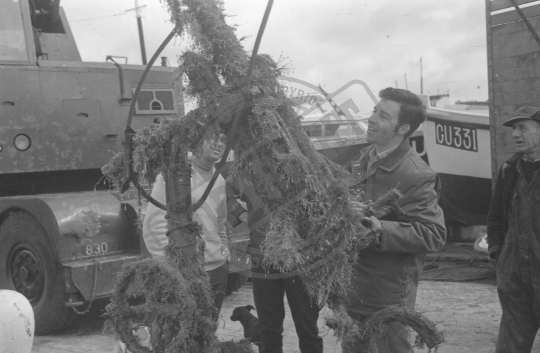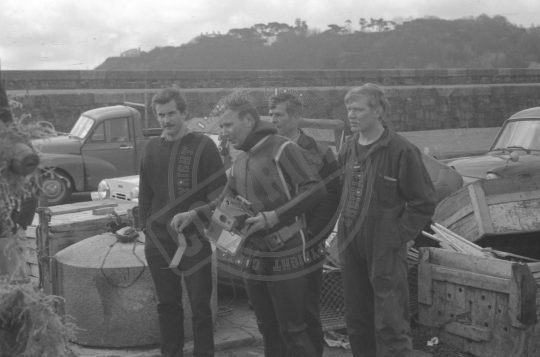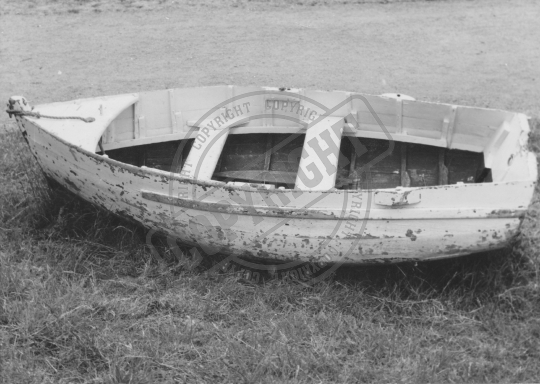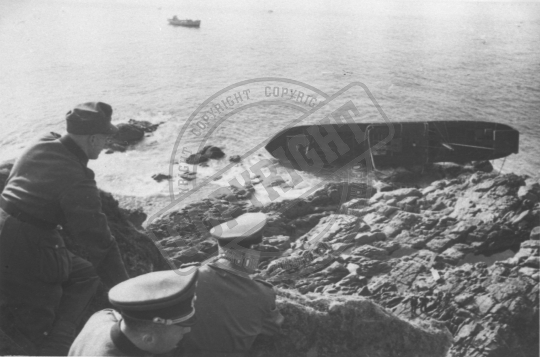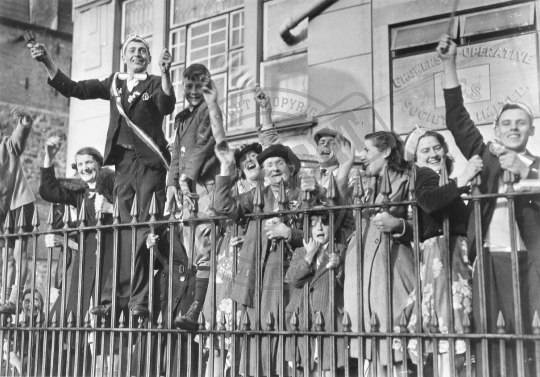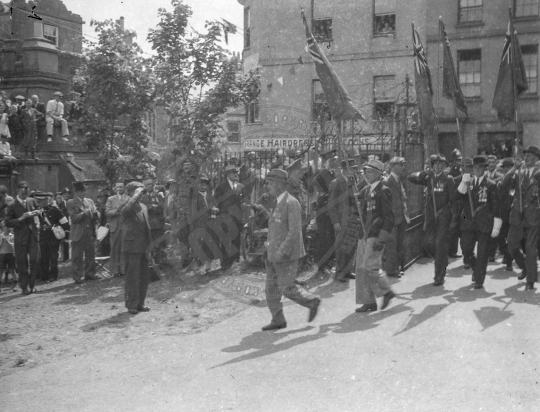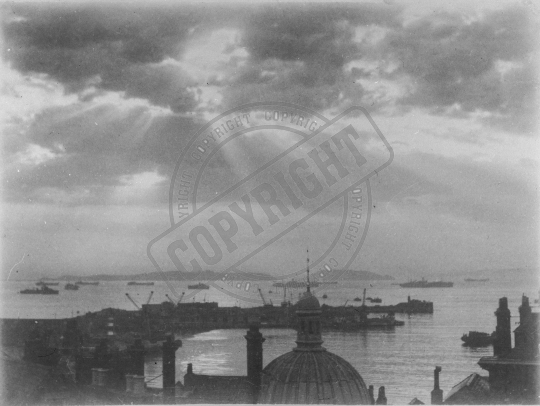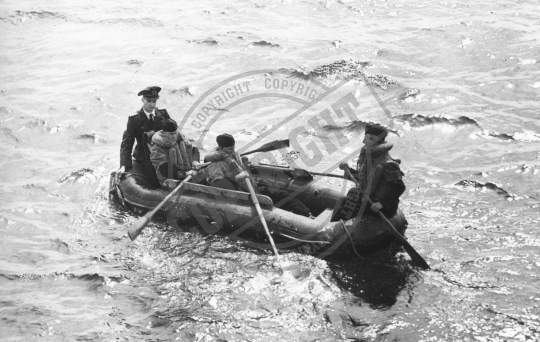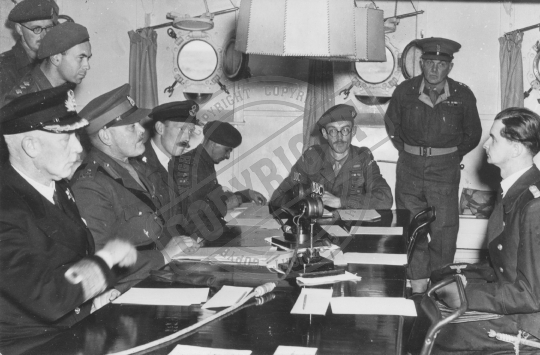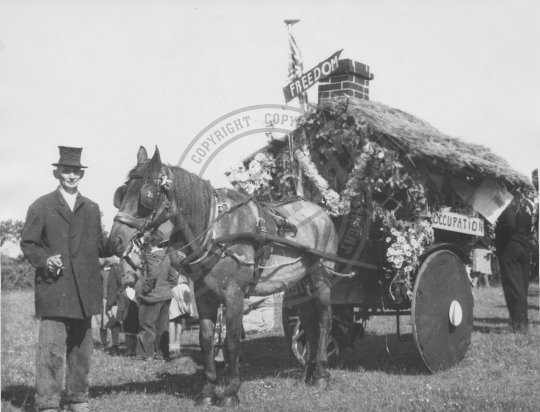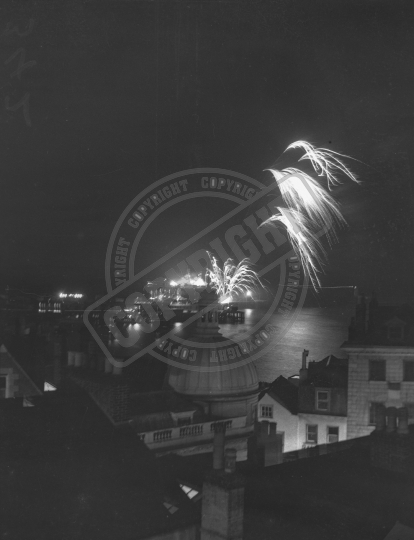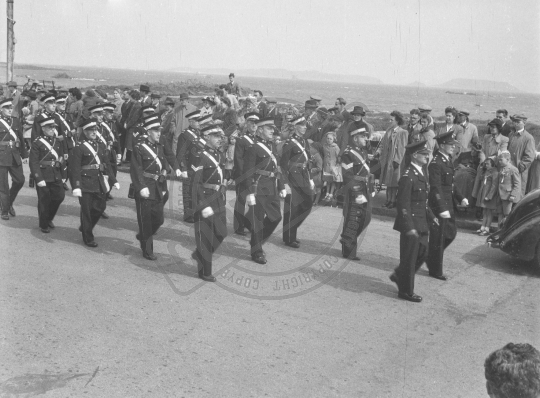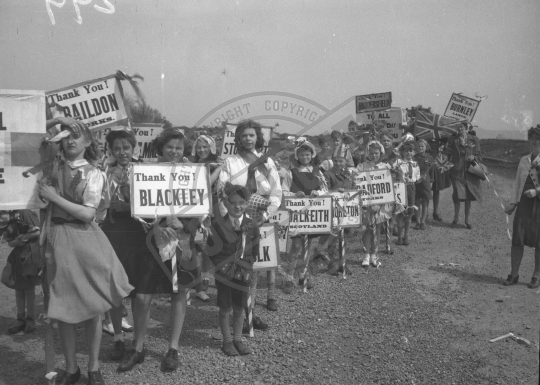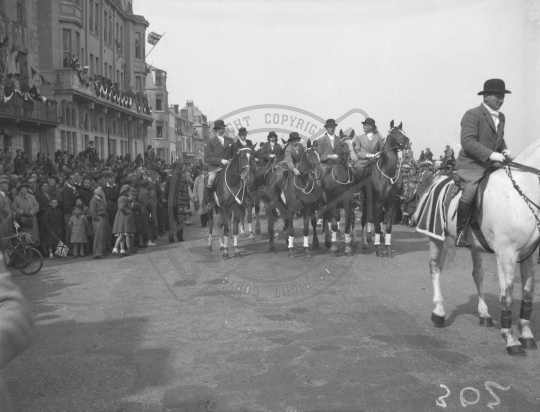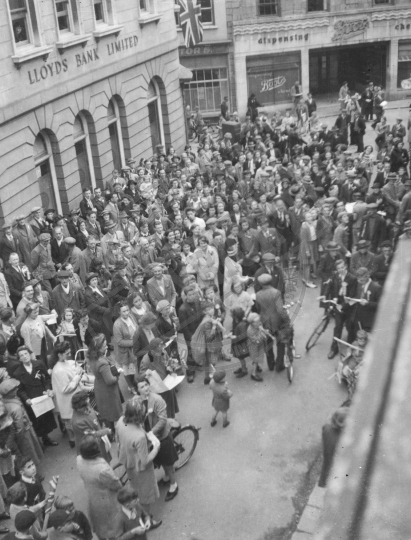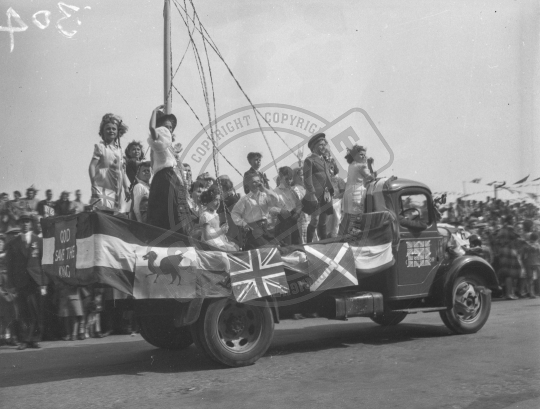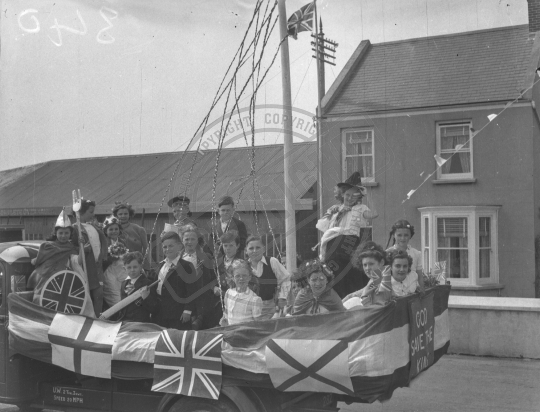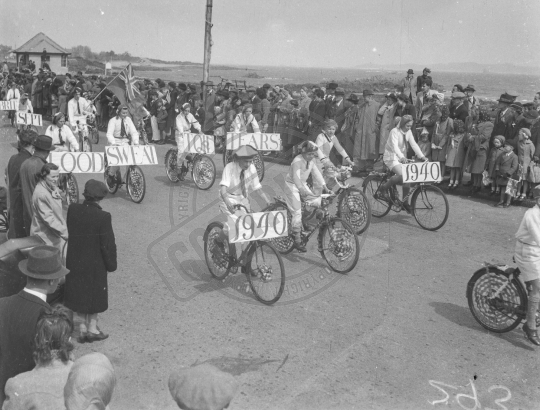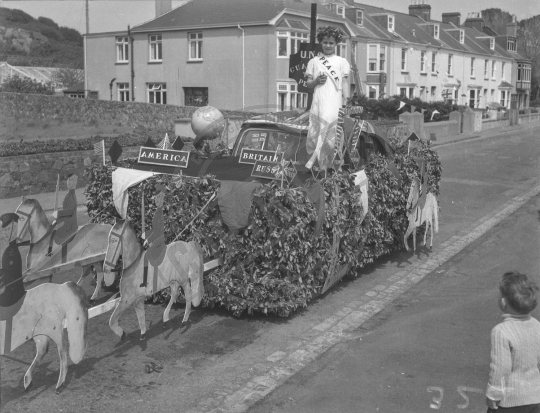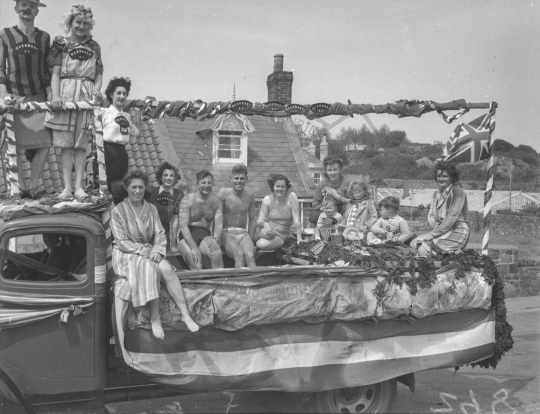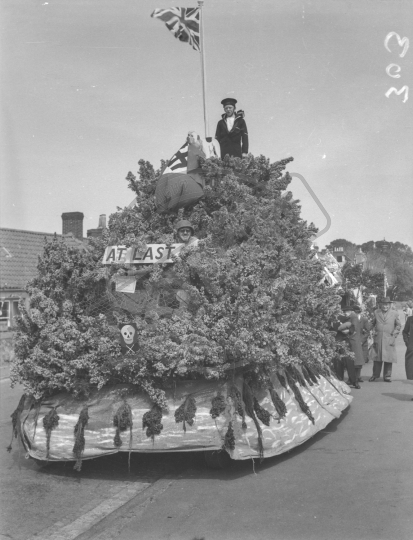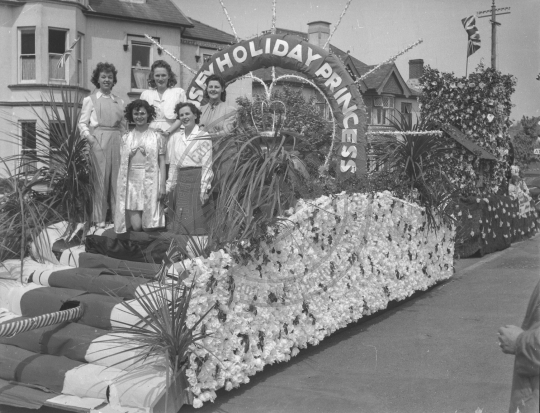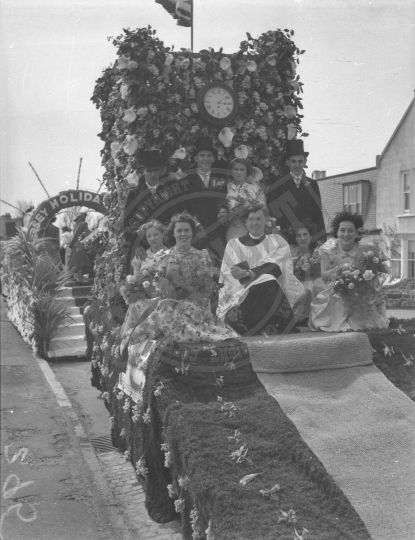Results (598)
TPL_00262
Germans man a 3.7cm Pak anti-tank gun in the entrance to the St Johns Ambulance Station located at the top of the Rohais, St Peter Port. At great risk this was photographed by Reg Blanchford.
TPL_00260
Outside the Alderney headquarters for the Feldkommondantur 515, the German Civilian administration on 1st May 1941. Hans Herzog the Sonderfuehrer for Alderney is seen with members from the Feldkommondantur 515 Guernsey and Jersey, which were based at the Grange Lodge and Victoria College respectively. Also there was second from the left, Oberst Schumacher and fourth from the left peeping through the gap is Dr. Kratzer.
TPL_00259
Sergeant Oeser outside Feldkommondantur 515 headquarters at Lloyds Bank, Alderney in June 1941.
SP_0004
Germans stand alongside one of the cannons of Castle Cornet in St Peter Port. The Castle was the 'Hafenschlosss' (harbour Castle) during the occupation of Guernsey by German forces from 1940 until 1945. The occupying forces built air raid shelters and platforms for anti aircraft-guns to update the Castle for 20th century warfare.
OA_063
Generalmajor Rudolf Wulf who was the Festungskommandant Jersey at liberation seen here after the award of his Knight’s cross of the Iron Cross, on 12th January 1943. At the time he was an Oberstleutnant (Lieutenant-Colonel) in charge of an infantry regiment.
OA_035
Ration queue extending down The Pollet in St Peter Port, past P. W. Kimber Gold and Silver Smiths, past a sparse looking shop window display, and C. A. Martin & Sons Ltd Hardware Shop.
OA_033
Guernsey, 9th May 1945. Colonel H. R. Power, OBE, MC (late Glosters), Chief civil affairs Officer (CCAO), No. 20 Civil Affairs Unit, HQ Guernsey, Force 135.
TPL_00377
The floating crane 'Antee’ being manoeuvred in the Old Harbour now better known now as the Albert Marina. This crane was used to offload many of the supplies brought to the island by the Germans including construction supplies and artillery pieces. The pier was fenced off to the public, in the background you can see a number of radio vehicles sited on the Crown Pier.
TPL_00256
Fishing boats laid up at the Old Harbour, St Peter Port, following the order for all boats to be moved to main harbours.
TPL_00255
Fishing boats laid up at the Old Harbour, St Peter Port, following the order for all boats to be moved to main harbours.
TPL_00254
Fishing boats laid up at the Old Harbour, St Peter Port, following the order for all boats to be moved to main harbours.
OA_024
Photograph of LSI (H) St Helier in 'D-Day’ camouflage carrying Landing Craft Assault and flying her Anti-Aircraft balloon. The reverse has been endorsed, “Passed for transmission through the post but not good for publication.” There are also two signatures, T. McBryde and P. J. Hickson, Surg. Lieut., RNVR, and an oval cachet in red, “Commanding Officer H.M.S. “St Helier” – 8 Feb 1945.” St Helier downed a German Stuka and rescued 10,200 troops at Dunkirk.
OA_001
Captain Glasson, Elder Brother of Trinity House, and two other officials arrived at Guernsey in HMS Leith on 17th May, 1945. They visited Les Hanois Lighthouse off the west coast of Guernsey and the lighthouses on Sark and Alderney.
TPL_00253
The sunken ship Staffa in Braye harbour, Alderney. The ship was loaded with parsnips and due to leave for Guernsey before breaking away from here mooring.
TPL_00252
Mrs Bessie Duplain disembarking from SS Autocarrier on her return to Alderney in December 1945.
TPL_00251
The German jetty at Braye Harbour, Alderney in advanced stages of decay. The jetty comprised of two Krupp sections linked to a Dortmunder Union section which in turn was connected to the existing harbour. The jetty was designed for use as an improvised harbour during Operation Sealion. It was finally demolished in 1979.
TPL_00241
Alderney’s greeting to repatriated islanders who returned in December 1945 after an absence of over five years. This marked one of the happiest days in islander’s history. Homecomers who had not seen their island since June 1940 stepped ashore to a warm welcome.
TPL_00250
20mm anti-aircraft gun salvaged in April 1969 by Mr Len Mecham and his crew of divers from the wreck of the VP209 'Dr. Rudolph Wahrenorff'. On cleaning the barnacles from the remains of the magazine five 20mm rounds were revealed.
TPL_00249
20mm anti-aircraft gun salvaged in April 1969 by Mr Len Mecham and his crew of divers from the wreck of the VP209 'Dr. Rudolph Wahrenorff'. On cleaning the barnacles from the remains of the magazine five 20mm rounds were revealed.
TPL_00248
20mm anti-aircraft gun salvaged in April 1969 by Mr Len Mecham and his crew of divers from the wreck of the VP209 'Dr. Rudolph Wahrenorff'. On cleaning the barnacles from the remains of the magazine five 20mm rounds were revealed.
TPL_00247
20mm anti-aircraft gun salvaged in April 1969 by Mr Len Mecham and his crew of divers from the wreck of the VP209 'Dr. Rudolph Wahrenorff'. On cleaning the barnacles from the remains of the magazine five 20mm rounds were revealed.
TPL_00246
20mm anti-aircraft gun salvaged in April 1969 by Mr Len Mecham and his crew of divers from the wreck of the VP209 'Dr. Rudolph Wahrenorff'. On cleaning the barnacles from the remains of the magazine five 20mm rounds were revealed.
TPL_00245
20mm anti-aircraft gun salvaged in April 1969 by Mr Len Mecham and his crew of divers from the wreck of the VP209 'Dr. Rudolph Wahrenorff'. On cleaning the barnacles from the remains of the magazine five 20mm rounds were revealed.
TPL_00244
The 8-foot dinghy in which Dennis Vibert escaped from Jersey to England in September 1941.
TPL_00243
One of the many ships used by the Germans to transport war material to the islands which came to grief on the treacherous north coast of Jersey.
TPL_00386
A crowd of joyous Guernsey islanders in front of the Growers Co-Operative Society building in St Peter Port on May 9th 1945.
TPL_00354
Members of the British Legion, banners flying and led by Mr. T. Macathie, entering Elizabeth College grounds, St Peter Port, Guernsey, for the Reading of the Proclamation and the King’s Message by Channel Island Commander, Brigadier Snow, on Saturday afternoon, 12th May, 1945.
TPL_00353
Group I, First Lift, of the Channel Islands Liberation fleet, codenamed 'agent’, commanded by Rear-Admiral C. G. Stuart, DSO, DSC, (Retd) serving in the rank of Captain, RN, Naval force Commander, Force 135, bound for Guernsey sailed from Plymouth at 15.45 hours on 11th may, 1945, 'W’ Day plus 7, and arrived off St Peter Port at 07.15 hours on Saturday, 12th May.
TPL_00240
Vizeadmiral Hüffmeier’s representative Kapitänleutnant Zimmermann returning to his vessel the German minesweeper M4613 after discussing Armistice terms on board HMS Bulldog. He was told to return to his commander and tell him to prepare for Unconditional Surrender. On leaving he arrogantly warned Brigadier Snow to move away from the coast otherwise this would be construed as an invitation to open fire. Astounded by Zimmermann’s effrontery Brigadier Snow is reported to have replied “Tell Hüffmeier that if he opens fire on us we will hang him tomorrow!”
TPL_00239
The Ward Room of HMS Bulldog during the first conference with Kapitänleutnant Armin Zimmerman Commander of the 46th Minesweeper Flotilla and Officer on the German Naval Commander’s Staff on Tuesday 8th May 1945. L to R: Rear-Admiral C. G. Stuart, Royal Navy representative; Brigadier A. E. Snow, Chief British Emissary; Captain H. Herzmark (standing) Intelligence Corps Interpreter; Lt-Col E. G. Stoneman (behind Herzmark), Commander 618 Regiment Royal Artillery; Wing Commander 'Archie’ Stewart, RAF Representative; Army Education Corps Senior NCO Clerk (writing); Major John E. Margesson, General Staff Officer II; and Colonel H. R. Power, CCAO.
TPL_00237
May 9th 1946. The great day finished with a display on a big scale of Brock’s fireworks. The gigantic firework display began at 10.15 p.m. and were fired from the White Rock Pier, St Peter Port.
TPL_00236
May 9th 1946. At the end of the procession were the members of St John Ambulance Brigade under Ambulance Officer J. Shore.
TPL_00234
May 9th 1946. Children of the Billeting Hostel, Hotel de France, under their warden Mrs. H. C. Poat formed a simple but really sincere tableau as they marched along with red white and blue flowing and with each child carrying a placard with “Thank you! Blackley” etc. These grateful boys and girls who spent the war years in England chose a happy way of expressing their gratitude to all the localities and were a notable feature of the procession.
TPL_00233
May 9th 1946. Class 16 Equestrians in Costume Tableaux or Groups. The Guernsey Riding and Hunt Club. A member informed a spectator that the horses were living enemy relics of the German Occupation. The spectator made a humorous reply “Good! Teach them manners and naturalise them”.
TPL_00232
Islanders gather in Smith Street St Peter Port outside Lloyds Bank to listen to the Prime Minister’s speech which was broadcast through loudspeakers on Tuesday 8th May 1945 at 3 p.m.
TPL_00231
May 9th 1946. Youth and Sports Clubs were well represented in the Cavalcade. St John’s Church Sunday School May-pole scene came first in Class 14.
TPL_00230
May 9th 1946. Youth and Sports Clubs were well represented in the Cavalcade. St John’s Church Sunday School May-pole scene came first in Class 14.
TPL_00229
May 9th 1946. The boys from Les Vauxbelets College produced a splendid tableau, a cycling representation of the war year by year leading up to the Liberation of the Channel Islands. They presented a striking picture in their white shirts, flannels, and multi-coloured tam-o-shanters.
TPL_00228
May 9th 1946. Extremely modern was the choice of Mr. A. G. Toms who in Class 12 Decorated Motor Cars brought the UNO right into our midst with petite Jean Potter as a charming statue of peace.
TPL_00226
May 9th 1946. The Guernsey Swimming Club in Class 11 Decorated Heavy Lorries drew many a shiver from the crowd in their realistic bathing pool which was surrounded by sand and rocks. Several members of the Guernsey Swimming Club braved the elements to appear in the Cavalcade.
TPL_00225
May 9th 1946. There were six entries in Class 11 Decorated Heavy Lorries which produced many praiseworthy efforts. In the front was Messrs. Leale Limited’s “At Last” gorse-covered vehicle depicting a sailor hoisting the Union Jack over the conquered Swastika with a bulldog at the rear biting the hind quarters of a helmeted Nazi who was endeavouring to find refuge.
TPL_00224
May 9th 1946. In Class 10 Decorated Trade Vehicles (Mechanical) was this radiant and charming bevy of girls who were some of the candidates in the competition for Guernsey’s Holiday Princess being held by the Gaumont Palace.
TPL_00223
May 9th 1946. One of the finest floral exhibits was Mr. James G. Falla’s effort “Just Married” in Class 10, Decorated Trade Vehicles (Mechanical). This depicted a church with a Union Jack flying and a bell tolling while a newly-married couple with their customary attendants and priest leave the church door.



